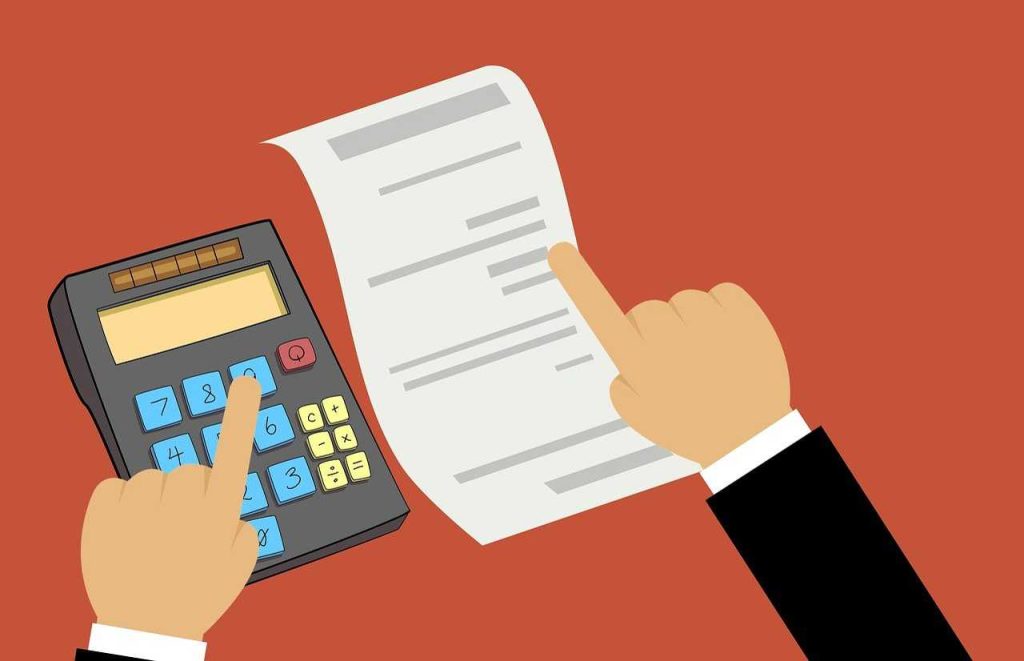Managing finances can feel overwhelming, especially when life throws unexpected expenses your way. Many people find themselves juggling bills, debt, and saving for future goals, leading to financial stress. But the good news is that taking control of your finances doesn’t have to be a complicated process. In this post, part of the “Make Life Easier” series, we’ll explore actionable strategies to help you regain control of your financial situation, simplify money management, and create a sustainable plan for financial health.

1. Assess Your Current Financial Situation
Understanding your current financial status is crucial to making informed decisions. Here’s how to assess your situation comprehensively:
1.1 Gather Financial Documents
Start by collecting all relevant financial documents, including:
- Bank statements: Review your checking and savings accounts to understand your income and spending patterns.
- Credit card statements: Analyze your credit card use to identify high-interest debts.
- Loan agreements: Gather details about personal loans, mortgages, or student loans, including interest rates and repayment schedules.
- Pay stubs: Look at your income over the past few months to understand your earnings.
1.2 Create a Net Worth Statement
Calculate your net worth to gauge your financial health. A net worth statement includes:
- Assets: List all valuable items you own, such as cash, investments, real estate, and vehicles.
- Liabilities: Include all debts, including credit card balances, loans, and mortgages.
Net Worth Calculation:
Net Worth=Total Assets−Total Liabilities\text{Net Worth} = \text{Total Assets} – \text{Total Liabilities}Net Worth=Total Assets−Total Liabilities
A positive net worth indicates you have more assets than liabilities, while a negative net worth suggests you owe more than you own.
1.3 Track Your Spending
For at least a month, keep a detailed record of all your expenses. You can use budgeting apps, spreadsheets, or pen and paper. Categorize your spending into:
- Fixed expenses: Rent/mortgage, utilities, insurance.
- Variable expenses: Groceries, entertainment, dining out.
- Discretionary spending: Non-essential purchases like hobbies and luxury items.
Understanding your spending patterns helps identify areas for improvement.

2. Create a Budget
A budget is a foundational tool for managing your finances effectively. It helps you allocate your income toward expenses, savings, and debt repayment. Here’s how to create a budget that works for you:
2.1 Choose a Budgeting Method
Different budgeting methods can suit various lifestyles. Here are a few popular approaches:
- Zero-Based Budgeting: Every dollar is assigned a specific purpose, ensuring your income minus expenses equals zero. This method promotes awareness of every dollar spent.
- 50/30/20 Rule: Allocate 50% of your income to needs (housing, utilities), 30% to wants (entertainment, dining), and 20% to savings and debt repayment. This method simplifies budgeting without overly restricting your spending.
- Envelope System: Withdraw cash for specific categories (like groceries or entertainment) and place it in labeled envelopes. Once the cash is gone, you can’t spend any more in that category.
2.2 List Your Income and Expenses
Document all sources of income and categorize your expenses. This helps you see where your money is going. Consider the following steps:
- Calculate your total income: Include salaries, freelance income, dividends, and any side hustles.
- Categorize your expenses: Break them down into fixed, variable, and discretionary categories.
2.3 Set Spending Limits
Based on your income, allocate funds to each category. Be realistic and ensure that your total expenses don’t exceed your total income. Adjust as necessary to prioritize savings and debt repayment.
2.4 Review and Adjust Regularly
Your budget is a living document that should be reviewed regularly. Monthly check-ins allow you to assess your progress, make adjustments, and set new goals.

3. Build an Emergency Fund
An emergency fund is your financial safety net, providing peace of mind during unexpected situations like medical emergencies or job loss. Here’s how to build one:
3.1 Set a Target Amount
Aim to save three to six months’ worth of living expenses. To determine your target:
- Calculate your monthly expenses: Include all essential costs (rent, groceries, utilities) to find your total.
- Set your target savings goal: Multiply your monthly expenses by three to six to establish your emergency fund target.
3.2 Open a Separate Savings Account
Keep your emergency fund in a high-yield savings account that earns interest but is separate from your everyday spending accounts. This separation helps prevent accidental spending and allows you to track your savings progress.
3.3 Automate Your Savings
Set up automatic transfers from your checking account to your emergency fund each month. This “pay yourself first” strategy ensures consistent saving without relying on willpower.
3.4 Start Small and Be Consistent
If saving a large sum feels daunting, start small. Aim for a manageable monthly contribution and increase it as your financial situation improves. The key is to be consistent, as small amounts add up over time.
4. Reduce Debt
Debt can be a significant burden, but taking proactive steps to reduce it can improve your financial well-being. Here’s how to tackle your debts effectively:
4.1 List All Debts
Create a comprehensive list of your debts, including:
- Creditor names
- Total amounts owed
- Interest rates
- Minimum monthly payments
This list will help you see the full scope of your debt situation.
4.2 Choose a Repayment Strategy
There are several methods to pay down debt, including:
- Snowball Method: Focus on paying off the smallest debt first while making minimum payments on larger debts. Once the smallest debt is paid off, roll that payment into the next smallest debt. This method provides psychological wins and motivation.
- Avalanche Method: Concentrate on paying off debts with the highest interest rates first while maintaining minimum payments on others. This method saves you more in interest over time.
4.3 Negotiate with Creditors
Reach out to your creditors to discuss your financial situation. Many are willing to negotiate lower interest rates or flexible payment plans, especially if you explain your circumstances. Here are some negotiation tips:
- Be honest about your situation: Explain your financial challenges and your desire to pay off the debt.
- Request lower interest rates: A lower rate can significantly reduce the total amount you owe over time.
- Ask about hardship programs: Some lenders offer programs for borrowers facing financial difficulties.
4.4 Consider Debt Consolidation
If you have multiple high-interest debts, consider consolidating them into a single loan with a lower interest rate. This can simplify your payments and save you money in the long run. Here are a few options:
- Personal loans: Obtain a personal loan to pay off high-interest credit card debt.
- Balance transfer credit cards: Transfer high-interest balances to a credit card with a 0% introductory APR on balance transfers.
Before consolidating, ensure that you understand the terms and potential fees involved.
5. Review Your Expenses

Regularly reviewing your expenses helps you identify areas where you can cut costs and save money. Here’s how to conduct a thorough review:
5.1 Analyze Your Spending Habits
Look for trends in your spending that may indicate areas to cut back. Ask yourself questions such as:
- Are there recurring subscriptions I no longer use?
- Am I spending too much on dining out or entertainment?
- Can I find more affordable alternatives for my regular purchases?
5.2 Create a “Wants vs. Needs” List
Differentiate between what you need and what you want. Needs are essential expenses (housing, groceries), while wants are discretionary spending (dining out, luxury items). Focus on fulfilling your needs before indulging in wants.
5.3 Shop Smarter
Implement strategies to save on everyday purchases, such as:
- Price comparison: Use apps or websites to compare prices before making a purchase.
- Use coupons and discounts: Take advantage of online coupons, cashback offers, and seasonal sales.
- Buy in bulk: Purchasing non-perishable items in bulk can save money in the long run.
5.4 Consider Lifestyle Changes
Sometimes, small lifestyle adjustments can lead to significant savings. Consider the following:
- Downsize: If feasible, consider moving to a smaller home or apartment to reduce rent/mortgage payments.
- Switch providers: Shop around for more affordable utility, internet, and insurance providers.
- Cook at home: Preparing meals at home can save money compared to dining out or ordering takeout.
By actively reviewing your expenses, you can identify opportunities to save money and improve your financial situation.
6. Plan for the Future
Financial planning is crucial for achieving long-term stability and meeting your goals. Here’s how to create a solid financial plan:
6.1 Define Your Financial Goals
Set specific, measurable, achievable, relevant, and time-bound (SMART) goals for your financial future. Consider both short-term and long-term goals, such as:
- Short-term: Saving for a vacation, building an emergency fund.
- Long-term: Saving for retirement, purchasing a home, funding your children’s education.
6.2 Create a Savings Plan
Determine how much you need to save each month to reach your goals. Here’s how:
- Calculate the total amount needed: Determine how much you need for each goal.
- Set a timeline: Decide when you want to achieve each goal.
- Determine monthly savings: Divide the total amount needed by the number of months until your deadline.
For example, if you want to save $12,000 for a down payment in three years, you need to save $333 a month.
6.3 Invest for the Future
Investing is a crucial component of building wealth over time. Here are some investment options to consider:
- Retirement accounts: Contribute to a 401(k) or IRA to benefit from tax advantages and compound interest.
- Stocks and bonds: Invest in individual stocks or bonds, or consider mutual funds or exchange-traded funds (ETFs) for diversification.
- Real estate: Consider investing in rental properties for potential passive income.
Before investing, research your options and consider consulting a financial advisor to create a tailored investment strategy.
7. Educate Yourself About Personal Finance
Knowledge is empowering when it comes to managing your finances. The more you understand personal finance concepts, the better equipped you’ll be to make informed decisions. Here’s how to educate yourself:
7.1 Read Books and Articles
Explore personal finance literature to gain insights into budgeting, investing, and debt management. Here are some recommended books:
- “The Total Money Makeover” by Dave Ramsey: A step-by-step guide to financial health and debt elimination.
- “Your Money or Your Life” by Vicki Robin and Joe Dominguez: A classic book on transforming your relationship with money.
- “Rich Dad Poor Dad” by Robert Kiyosaki: Offers valuable lessons on investing and financial independence.
7.2 Attend Workshops and Seminars
Look for local workshops or online courses covering various aspects of personal finance, such as:
- Budgeting basics
- Investing 101
- Debt management strategies
These resources can provide valuable information and networking opportunities with like-minded individuals.
7.3 Follow Financial Blogs and Podcasts
Stay updated on financial trends and tips by following reputable personal finance blogs and podcasts. Some popular ones include:
- The Dave Ramsey Show: Offers practical advice on debt reduction and financial planning.
- BiggerPockets Podcast: Focuses on real estate investing and financial independence.
- Smart Passive Income: Provides insights on creating multiple income streams.
By consuming relevant content regularly, you’ll expand your knowledge and develop better financial habits.
8. Seek Professional Help if Needed
If your financial situation feels overwhelming or complex, consider seeking help from a financial professional. Here’s when to seek assistance:
8.1 Financial Advisors
A certified financial advisor can provide personalized advice tailored to your financial goals. They can help you with:
- Investment strategies
- Retirement planning
- Tax optimization
When selecting a financial advisor, ensure they are certified and have a good reputation.
8.2 Credit Counseling Services
If you’re struggling with debt, credit counseling services can help you develop a plan to manage your debt and improve your credit score. They offer:
- Debt management plans
- Budgeting advice
- Credit education resources
Look for non-profit organizations that offer these services to ensure you receive unbiased assistance.
8.3 Tax Professionals
For tax-related questions or complex financial situations, consider consulting a tax professional. They can help you:
- Optimize your tax strategy
- Ensure compliance with tax laws
- Identify deductions and credits you may have missed
9. Practice Mindfulness and Positive Habits
Managing finances can be stressful, but incorporating mindfulness and positive habits can ease anxiety and improve your decision-making. Here’s how to cultivate a positive mindset around money:
9.1 Practice Gratitude
Regularly acknowledging what you’re grateful for can shift your mindset toward abundance rather than scarcity. This practice can help reduce feelings of envy or dissatisfaction related to finances.
9.2 Set Aside Time for Financial Planning
Dedicate regular time to review your finances, plan your budget, and assess your progress toward financial goals. Consider scheduling a weekly or monthly “money date” where you can focus on your financial health without distractions.
9.3 Stay Positive
Focus on your achievements, no matter how small, and remind yourself that improving your financial situation is a gradual process. Celebrate milestones along the way, such as paying off a debt or reaching a savings goal.
9.4 Practice Mindful Spending
Before making a purchase, take a moment to consider whether the expense aligns with your values and financial goals. Ask yourself:
- Is this purchase necessary?
- Will it bring me long-term satisfaction?
Practicing mindful spending can help you make better financial decisions and reduce impulse purchases.
Conclusion
If your finances feel like a mess, don’t despair. By taking proactive steps to assess your situation, create a budget, reduce debt, and plan for the future, you can regain control of your financial life. Remember that financial management is a journey, and it’s essential to be patient with yourself as you make progress.
Start by implementing these strategies one step at a time, and soon you’ll find yourself on the path to financial stability and peace of mind. It’s never too late to take charge of your finances and make life easier for yourself!

